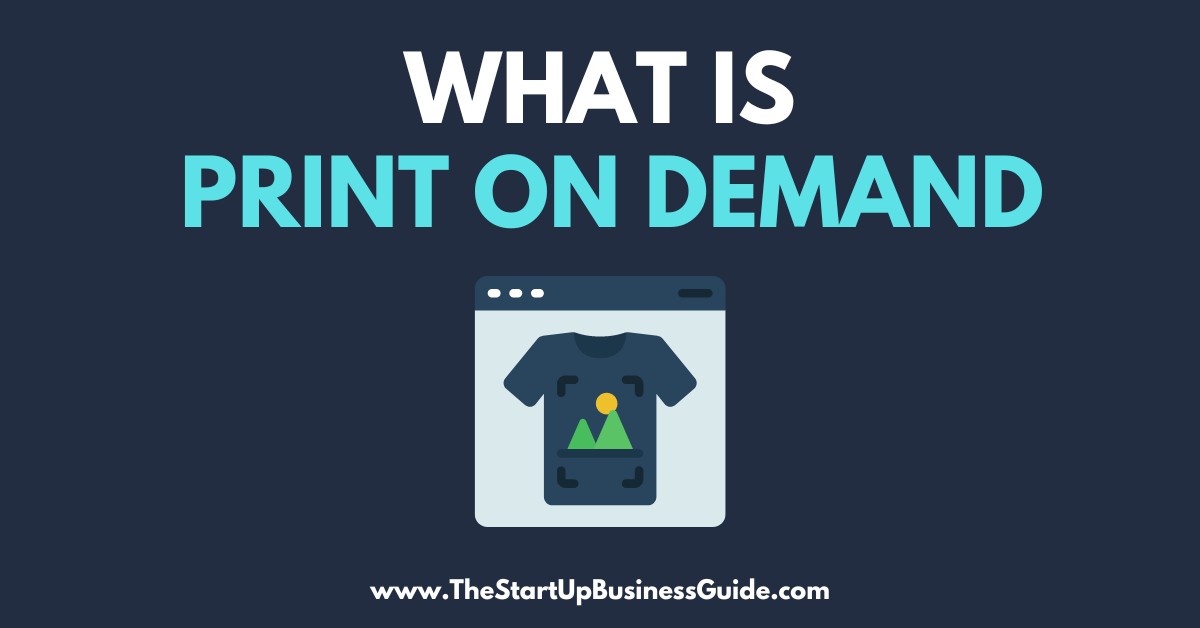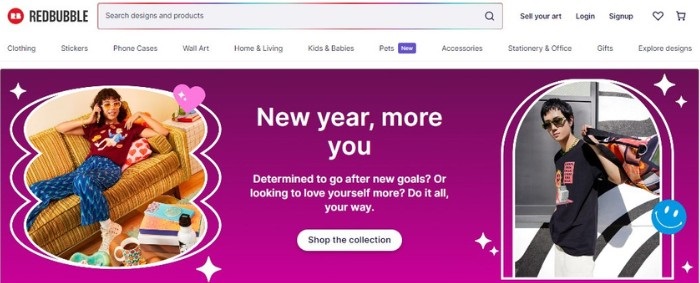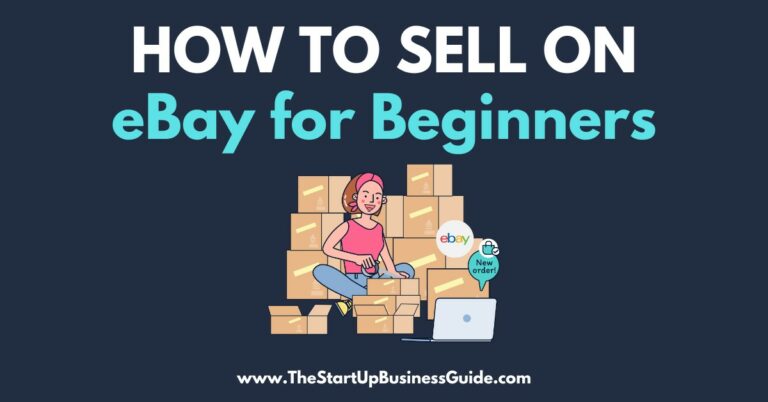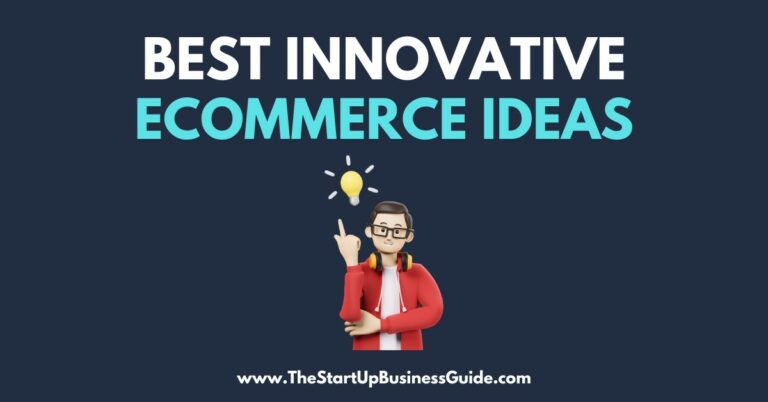What is Print On Demand and How it Works?

If you’re looking for a flexible and scalable business model, you may want to consider print on demand (POD).
POD is a type of manufacturing in which products are created only when a customer orders them, rather than producing large quantities of items in advance.
In simpler terms, it’s a way of creating and selling products without having to worry about stocking inventory or taking on the financial risk of unsold products.
This allows you as a business owner to have a much more flexible and low-risk setup, while also allowing you to test out different product ideas before committing to mass production.
There are many potential benefits of starting a POD business.
Perhaps the biggest advantage is the low startup costs. You don’t need to invest in a large inventory upfront or spend a lot of money on manufacturing and storage.

This means you can start your business with relatively little investment and grow it at your own pace.
Further, POD also allows for a wide range of product options and designs, from clothing, home décor, accessories and much more.
In this blog post, we will dive deep into the world of print on demand and cover everything you need to know to get started with your own POD business.
From understanding how POD works, to choosing the right supplier, and setting up your own online store.
We will also cover the pros and cons of a POD business model and give you tips and tricks to help you succeed.
So, whether you’re a seasoned business owner looking for a new venture or a first-time entrepreneur, there’s something here for everyone.
How Does the Print on Demand Business Work?
Great question! Let’s dive into the inner workings of a print on demand (POD) business.
First, let’s talk about the process.
When it comes to POD, the process starts with product design and creation.
As a POD business owner, you will be responsible for creating designs and selecting products to sell on your online store.
This can involve creating your own designs or partnering with designers to create custom designs for your business.
Once you have your product designs and product selection in place, it’s time to connect with a POD supplier.
A POD supplier is a company that specializes in manufacturing and fulfillment for POD businesses.
They will handle the printing, cutting, and sewing (or assembly) of your products, as well as the shipping and handling when orders come through.
When a customer places an order on your online store, the order is then sent to your POD supplier who will then manufacture and ship the product directly to the customer.
This eliminates the need for you to keep a large inventory on hand or worry about shipping and handling yourself.
It’s important to note that not all POD suppliers are created equal.
So it’s crucial to do your research and choose a reputable supplier with a good track record of producing high-quality products and providing excellent customer service.
Now, let’s discuss the key players in a POD business. The first player, of course, is the business owner.
As the business owner, you’ll be responsible for creating product designs, setting up and running your online store, and marketing your products to customers.
The second key player is the POD supplier.
As we mentioned earlier, they handle the manufacturing and fulfillment of your products and play a crucial role in the success of your business.
And the last but not the least is the customer.
They are the lifeblood of your business, and it’s important to prioritize their satisfaction and provide excellent customer service to build a loyal customer base.
Overall, understanding how a POD business works is an essential first step in starting your own POD business.
By understanding the whole POD process, you’ll be well-equipped to make informed decisions and navigate the intricacies of POD with confidence.
Types of Print on Demand (POD) Products
One of the great things about print on demand (POD) businesses is that there are so many different types of products that you can create and sell.
Here are a few examples for you to consider:
- Clothing: T-shirts, hoodies, tank tops, and more.
- Home decor: Pillows, blankets, wall art, and more.
- Personal accessories: Phone cases, mugs, tote bags, and more.
- Book & Printed Material: Customized journals, photo books and more.
- Outdoor & Sports goods: Customized backpacks, hats, water bottles and more.
- Gift items: Customized gift items like mugs, picture frames, keychains and more.
The list really goes on and on. The beauty of POD is that you can offer an almost limitless variety of products.
It allows for a wide range of product options and designs.
However, different types of products have their own unique pros and cons when it comes to POD businesses.
For example, clothing is a popular option for POD businesses because it’s a product that people use and wear every day, which can lead to repeat customers and word-of-mouth marketing.
On the other hand, clothing products can be more complex to produce and may require more detailed size and fit information.
Home décor and personal accessories, on the other hand, are relatively straightforward to produce and may have a lower return rate.
But the competition in these segments is also relatively high, making it harder to stand out in a crowded market.
In terms of outdoor goods, they usually have a higher price point, and thus can bring in more revenue per sale.
But they may also require more detailed knowledge of the product in terms of safety, compliance, and quality standards.
Overall, it’s important to think carefully about the types of products you want to sell through your POD business and consider the pros and cons of each option.
Consider the target audience, competition and the overall market demand for the products you’re considering.
By considering all these factors, you’ll be better equipped to make informed decisions about the types of products you want to sell and how to position your business for success.
How to Choose a POD Supplier
When it comes to running a successful print on demand (POD) business, choosing the right supplier is key.
After all, your supplier will handle the manufacturing and fulfillment of your products, so it’s important to find one that can deliver high-quality products and reliable service.
Here are a few tips to help you find a reputable POD supplier:
- Look for established companies: A company that has been in business for a while is more likely to be reputable and have a good track record of producing high-quality products and providing excellent customer service. Some well-known POD suppliers include Printify, Redbubble, and Printful.
- Check their production capabilities: Make sure the supplier you choose has the production capabilities to produce the types of products you want to sell, such as T-shirts, mugs, or phone cases.
- Look for variety of product offerings: Consider if the supplier have a wide range of products options and styles, that way you can test and expand your product offerings in the future.
- Read reviews and ask for references: Do your research and read reviews of the supplier. Ask for references from other business owners who have used their services and ask about their experience.
- Compare pricing and shipping rates: POD suppliers will charge different rates for their services, so be sure to compare pricing and shipping rates before making a final decision. You’ll want to choose a supplier that offers competitive rates without sacrificing quality.
- Check for customer service quality: It’s important to have a supplier that provides excellent customer service and is responsive to customer inquiries.
By following these tips and carefully considering the key factors, you’ll be well-equipped to choose a reputable POD supplier that can help your business thrive.
You need to remember that, choosing the right supplier can make a huge difference in the success of your POD business, so it’s worth taking the time to find the right fit.
Best Platforms for Print on Demand
When it comes to setting up an online store for your print on demand (POD) business, there are a variety of e-commerce platforms to choose from.
Each platform has its own unique features and pricing plans, so it’s important to choose the one that best suits your needs.
Here’s an overview of some of the most popular e-commerce platforms for POD businesses:
Shopify
Shopify is a leading e-commerce platform that offers a wide range of features and integrations, including built-in support for POD products through apps such as Printful and Printify.
Shopify has a variety of pricing plans starting at $29/month and it’s easy to use interface, along with it’s mobile app and 24/7 customer support make it a great choice for both new and experienced business owners.
BigCommerce
BigCommerce is another popular e-commerce platform that’s known for its scalability and flexibility.
Like Shopify, it also has built-in support for POD products through apps such as Printify and Redbubble.
The platform offers a variety of pricing plans starting at $29.95/month with features such as unlimited products, and pre-built templates.
Wix
Wix is a website builder platform that also offers e-commerce functionality.
It’s user-friendly drag-and-drop interface and wide range of templates, making it perfect for small businesses and individuals looking for an affordable platform.
It’s not as widely used for POD businesses, but it can be integrated with third-party POD apps like Printful, and Redbubble.
WooCommerce
WooCommerce is an open-source e-commerce plugin for WordPress.
It allows you to easily turn your WordPress website into an online store. The platform is free, but you’ll need to pay for hosting, domain and SSL certificate.
It has a wide range of supported plugins, including some for POD, like Printify and Printful, but may be more technical and less beginner-friendly compared to the other platforms.
When choosing a platform, it’s essential to consider your business needs and the features each platform offers.
Take into account factors such as pricing, ease of use, customization options, and integrations with POD apps, shipping and payment options.
By taking the time to carefully compare the features and pricing of different platforms, you’ll be able to choose the right one for your business.
Tips for Starting a Print on Demand Business
Starting a print on demand (POD) business can be an exciting and rewarding endeavor, but it’s not without its challenges.
In order to set your business up for success, it’s important to take the time to properly plan and prepare.
Here are a few tips to help you get started:
Create a business plan
A well-crafted business plan will help you define your goals, identify your target market, and develop a marketing strategy.
It’s also a useful tool for securing funding from investors or lenders.
Conduct market research
Before you start selling products, it’s important to understand your target market and what products they are most likely to buy.
Conducting market research will help you identify trends, pain points and unmet needs in your industry.
Create a marketing strategy
Your marketing strategy should be tailored to your target market and should include tactics such as social media marketing, influencer marketing, and content marketing.
It’s also important to analyze and optimize your strategies over time to ensure you are reaching the right audiences and achieve the desired results.
Choose a niche product
Having a niche product and target market will help you stand out in a crowded market and make it easier to find and reach your target customers.
Carefully choose your supplier
As we discussed in an earlier section, choosing the right supplier is crucial to the success of your business.
Take the time to research and compare different suppliers, and choose one that offers high-quality products and services at a fair price.
Build a strong online presence
Your website and social media pages are your digital storefronts.
They need to be professional, easy to navigate and visually appealing.
This can help you establish trust and credibility with your customers and help drive sales.
Constantly evaluate and improve
The e-commerce landscape is constantly changing, and it’s essential to stay up-to-date on the latest trends and technologies.
Continuously evaluate your business, products and strategies, and make changes as needed to improve your business.
Starting a POD business can be a challenging and rewarding experience, but by following these tips and taking the time to properly plan and prepare, you’ll be well on your way to success.
And remember, persistence and patience are the key, as with any business, it takes time to grow and establish a loyal customer base.
How to Set Up Your Print on Demand Business
Starting a print on demand (POD) business can seem overwhelming, but with the right tools and resources, it’s actually quite simple.
Here’s a step-by-step guide to help you set up your own POD business:
Choose an e-commerce platform
As we discussed in the previous section, Shopify, BigCommerce, Wix and WooCommerce are popular choices for POD businesses. Choose one that best fits your business needs and budget.
Create a product catalog
Your product catalog is the backbone of your POD business. It should include detailed information about your products, such as size, color, and material options. This information will be used to create product listings on your online store.
Set prices
Decide on the prices for your products, making sure to take into account the cost of production, shipping, and any other expenses. Consider also adding a margin for profit.
Create product listings
Once you have your product catalog and prices, you can start creating product listings on your online store. Be sure to include high-quality product images and detailed product descriptions.
Integrate with POD supplier
Choose a POD supplier, as we discussed in an earlier section, and integrate your e-commerce platform with their services. This will allow you to sell products on your online store, and the supplier will handle the manufacturing and fulfillment of your products.
Launch your online store
Once your product catalog, prices, and product listings are in place, you can launch your online store. Make sure to have a clear and user-friendly navigation, and easy-to-find contact information on the website.
Create a marketing strategy
Once your store is live, create a marketing strategy that is tailored to your target market and product offerings. This will help you attract customers and boost sales.
Manage your inventory
POD business model allows you to avoid the hassle of managing inventory, but it’s important to keep an eye on your products and restock as needed.
By following these steps, you’ll be well on your way to setting up your own successful POD business.
Keep in mind that the most important thing is to be patient and persistent, starting a business takes time, and it is important to learn from your mistakes and adjust accordingly.
With the right tools and resources, you’ll be able to turn your passion into a profitable business.
Pros and Cons of a Print on Demand Business
Print on demand (POD) business model has become increasingly popular in recent years, offering entrepreneurs a way to create and sell products without the need for a large upfront investment or inventory management.
However, as with any business model, there are both pros and cons to consider before starting a POD business.
Pros:
- Low startup costs: With POD, you don’t have to invest in a large inventory or pay for manufacturing upfront. This makes it an accessible option for entrepreneurs with limited funds.
- Flexibility in product offerings: With POD, you have the freedom to create and sell a wide range of products. It gives you the flexibility to test out new product ideas and offerings without the risk of unsold inventory.
- No inventory management: POD suppliers handle the manufacturing and fulfillment of products, meaning you don’t have to worry about managing inventory or dealing with shipping and handling.
- Print-on-demand allows for personalization and Customization.
- POD allows for a scalability, and as your business grows, you can increase your product offerings, and scale up production.
Cons:
- Lower profit margins: POD products typically have lower profit margins than products that are manufactured and sold in bulk.
- Less control over production: When you work with a POD supplier, you have less control over the production process and may have to rely on their capabilities and quality standards.
- Competition: POD market is growing, and competition is increasing, making it harder to stand out and be successful.
- Limited possibilities of bulk discounts on production, shipping and handling.
- Quality can sometimes be compromised, when the supplier is not chosen carefully.
It’s important to keep in mind that these are general pros and cons and may not be relevant or applicable to every POD business.
Furthermore, as with any business model, there will be challenges and obstacles to overcome.
However, with the right approach, POD can be a viable and profitable business model for entrepreneurs.
Conclusion
In conclusion, starting a print on demand (POD) business can be a great opportunity for entrepreneurs looking to create and sell their own products without a large upfront investment.
However, as we discussed in this blog post, it’s important to understand the pros and cons of this business model and carefully research and prepare before launching your business.
We walked through the process of setting up a POD business, from choosing an e-commerce platform and creating a product catalog, to setting prices and creating a marketing strategy.
We also highlighted some of the key players in a POD business, including the business owner, POD supplier, and customer.
If you’re considering starting a POD business, we encourage you to take the time to evaluate if it’s the right fit for you and your business idea.


